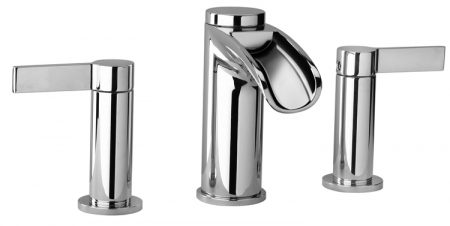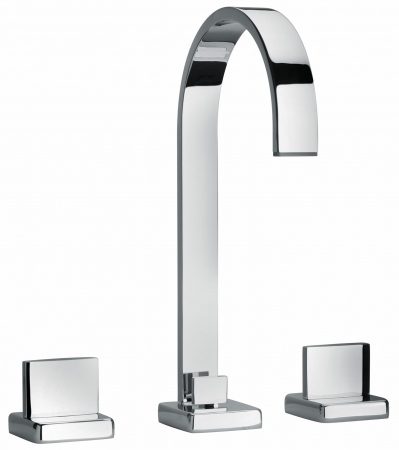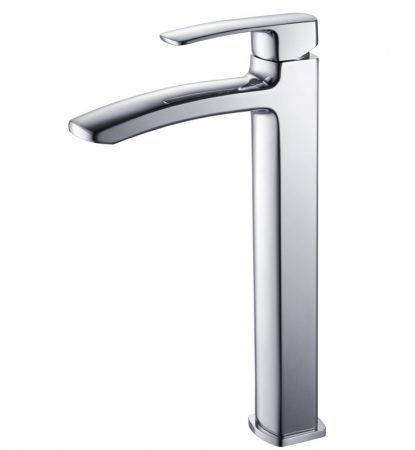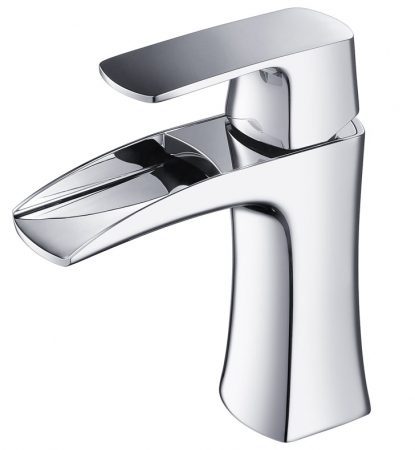A faucet is a faucet, ri0ght? Well, not necessarily. When it comes to bathroom vanity sink faucets, there are several things to consider, from the mounting style to the fixture type, pressure options (low flow versus standard, etc.), and so on. Fortunately, you don’t have to deal with it on your own. Read on for 10 of the most common questions about bathroom sink faucets so that you can have a better idea of what you’re dealing with.

- 1. What are the different mounting types of bathroom faucets?
- 2. What is the flow rate?
- 3. What is a good flow rate for a bathroom faucet?
- 4. Are all faucets compatible with all sinks?
- 5. What should I look for in a bathroom faucet?
- 6. What causes low water pressure in the bathroom faucet?
- 7. How do I increase the faucet flow rate?
- 8. Which is better: one or two handle faucets?
- 9. How to measure a bathroom sink faucet?
- 10. Is it easy to replace a bathroom faucet?
1. What are the different mounting types of bathroom faucets?
There are five main types of bathroom faucet mounting options. The most common are the single-hole and the center-set (three-hole) faucet. Center-set faucets include handles four or eight inches apart with a spout in the middle and a single unit. Single-hole facets may have one or two handles. Some sinks may have been drilled for extra holes, but those can be covered with a plate if unused.
Vessel faucets are taller and designed to fit with vessel sinks that sit higher than other styles. They usually include a single handle. The other two options are less common and more common in commercial spaces: wall-mounted faucets and widespread faucets, which are available when you need more reach.
Related: 6 Questions About Bathroom Mirrors
Chrome Single Hole Vessel Sink Faucet
2. What is the flow rate?
The flow rate is the rate at which water flows out of your faucet. There are a lot of complex elements involved, but it ultimately boils down to that: the speed at which water is dispensed from your sink, shower, or tub. Every faucet in the home has a pre-set flow rate. You can also purchase new aerators with adjustable flow rates to conserve water or choose a fixture with a higher flow rate if you want more water pressure in the shower, for example. Flow rate is measured in gallons per minute (GPM).
3. What is a good flow rate for a bathroom faucet?
A good flow rate for a bathroom faucet usually ranges from 0.8 GPM to 1.5 GPM, although they can be as high as 2.2 GPM. Some states have environmental regulations limiting the flow rate allowed for appliances, such as California, where it cannot exceed 1.8 GPM. You can find the flow rate of a faucet or fixture on the packaging.

Two Handle Wall Mount Bathroom Faucet
4. Are all faucets compatible with all sinks?
Not all faucets are compatible with all sinks. As mentioned above, different faucets may or may not fit some sinks, depending on the holes drilled or the space created for the faucets and handles. Vessel faucets, for example, are great for vessel sinks but may be too high for a standard basin sink. And if you have a single hole in your sink, you won’t have room for a three-hole faucet. Choose your sink, then your faucet, for the best results.
Related: 8 Trending Vessel Sink Bathroom Vanities
5. What should I look for in a bathroom faucet?
The first thing you need to know is the center of your faucet so you can choose the right size for your sink. If you’re installing a new sink, find out what the center measurement is on the holes drilled for the faucet. Beyond function, you’ll also want to consider the color and finish of the faucet regarding how it fits into your bathroom design.
If you’re eco-conscious or live somewhere with restrictions, you’ll also want to check out the flow rate of your new faucet.
Chrome Single Hole Bathroom Vanity Faucet
6. What causes low water pressure in the bathroom faucet?
Several things can cause low pressure. If the issue is limited to one fixture or faucet, it’s probably the fixture itself. It could be blocked with hard water deposits and other buildup, or it could just be wearing out over time. You may have a clogged aerator in a sink faucet, or the cartridge could be blocked. Other causes include leaks, pressure regulator failures, and older homes where pipes are corroded, filled with buildup, and even blocked by tree roots.
7. How do I increase the faucet flow rate?
The easiest way to increase the flow rate of a faucet is usually to replace the aerator. You can choose a model with a higher GPM that will allow more water to flow through the pipes. As mentioned, you can also clean the aerator and cartridge, which may increase the flow rate. Consider checking the plumbing if the whole house is experiencing flow rate issues.
Related: Bathroom Hacks Everyone Should Know

8. Which is better: one or two handle faucets?
This is a matter of taste for the most part. Single handle faucets are ideal for modern, streamlined bathrooms. They’re also good for small sinks, and they offer easier cleaning. Plus, they’re easy to operate with one hand, which is sometimes essential in the bathroom. Two-handle faucets allow you to close off cold or hot water completely. They also allow you to continue using one side if the other leaks. Plus, they create a symmetrical, classic finish in any bathroom. There are more moving parts to consider with a two-handle faucet, but choosing quality parts won’t be an issue.
9. How to measure a bathroom sink faucet?
The most common measurement needed from a bathroom sink is the faucet center. This can be checked by measuring the distance between the two outer faucet holds. Faucet centers generally run from four to eight inches but can reach 16 inches. If you have one hole, you won’t need to measure it at all. Other measurements include the spout height and reach or the height of the spout from the counter and the reach of the faucet from the mounting point to the end of the spout.
Chrome Single Hole Bathroom Vanity Faucet
10. Is it easy to replace a bathroom faucet?
Replacing a bathroom faucet is a fairly simple task. Depending on the type of faucet you have, you may be replacing one or two water lines (single- versus double-hole) but connecting those is usually the hardest part. Most installations involve removing the old faucet, dropping in the new one, and connecting the water lines. If you don’t have any plumbing experience, it might be best to hire a professional.
Related: Tips To Care For Your Bathroom Vanity





